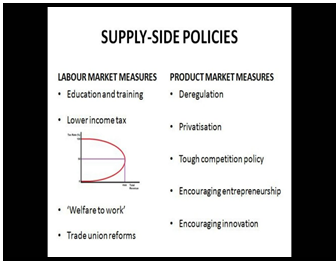CENTRAL BANKERS’ MODELS NEED TO INCREASE EMPHASIS ON SUPPLY SIDE
Why in the news?
Governor Shaktikanta Das of the Reserve Bank of India during the 59th South East Asian Central Banks Governors’ Conference in Mumbai address significant shifts in the global economy
source:slideserve
What is Monetary policy?
Monetary policy refers to the strategies employed by the central bank to regulate the country’s money supply and interest rates to achieve specific objectives outlined by law.
Objectives:
- Maintain price stability to support sustainable economic growth.
- Government sets inflation target (4% +-2%) every five years in consultation with the Reserve Bank of India (RBI).
| Various instruments of Monetary policy
· Repo Rate: Interest rate for providing liquidity to banks. · Reverse Repo Rate: Interest rate for absorbing liquidity from banks. · Liquidity Adjustment Facility (LAF): Includes overnight and term repo auctions. · Marginal Standing Facility (MSF): Banks borrow overnight funds against collateral at a penal rate. · Bank Rate: Rate for buying or rediscounting bills of exchange. · Cash Reserve Ratio (CRR): Minimum balance banks must maintain with RBI. · Statutory Liquidity Ratio (SLR): Percentage of assets banks must hold in liquid assets. · Open Market Operations (OMOs): Buying and selling government securities to manage liquidity. · Market Stabilisation Scheme (MSS): Absorbing surplus liquidity from large capital inflows through the sale of short-dated government securities. |

 source:slideserve
source:slideserve

